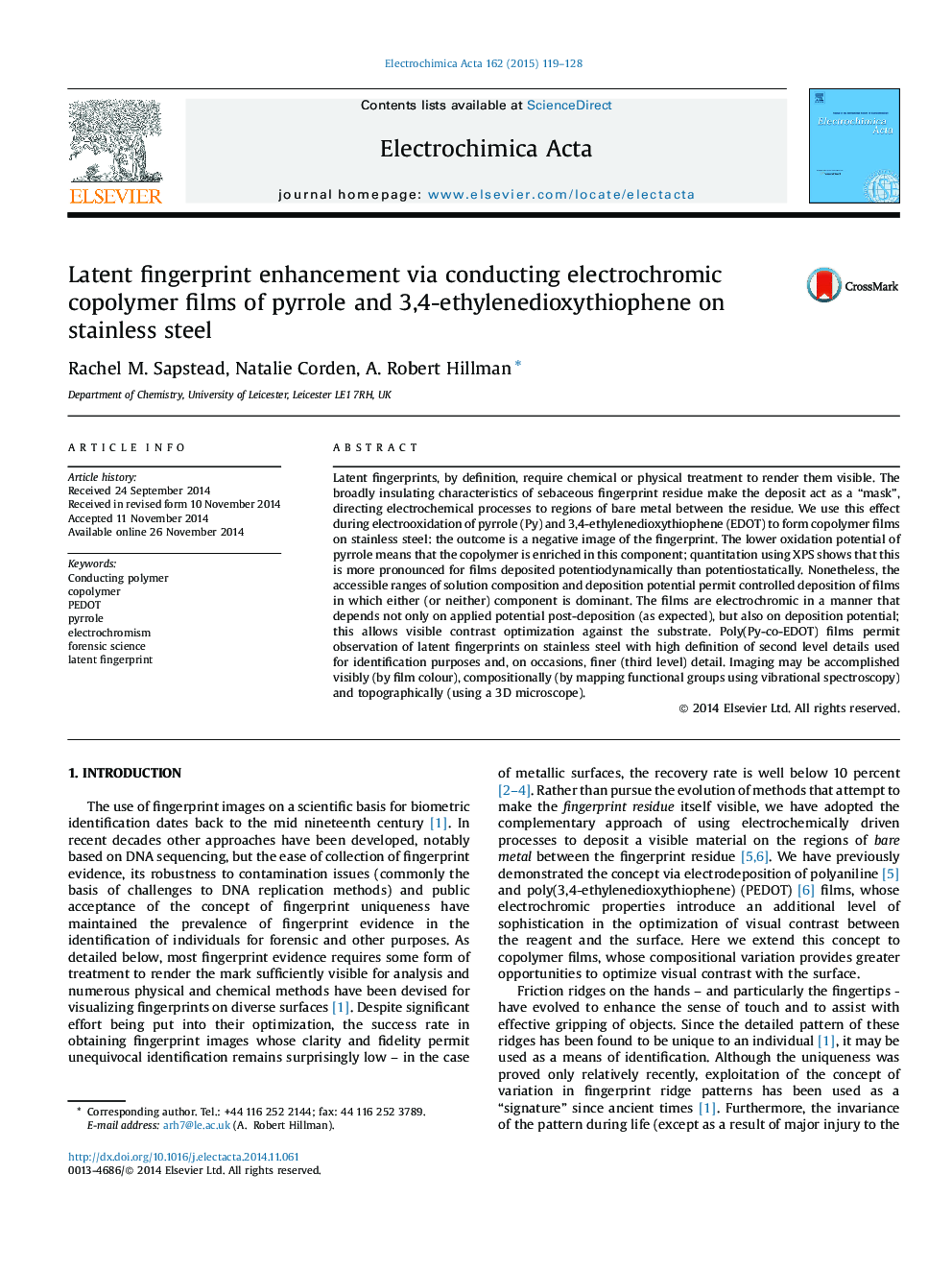| کد مقاله | کد نشریه | سال انتشار | مقاله انگلیسی | نسخه تمام متن |
|---|---|---|---|---|
| 184013 | 459566 | 2015 | 10 صفحه PDF | دانلود رایگان |
• Copolymer films of pyrrole and 3,4-ethylenedioxythiophene (EDOT) can be prepared with controllable composition.
• Potentiodynamic (cf. potentiostatic) copolymer deposition yields films relatively enriched in pyrrole.
• Poly(pyrrole-co-EDOT) films have electrochromic properties that depend on deposition conditions.
• Templated deposition of poly(pyrrole-co-EDOT) films can be used to visualize latent fingerprints on a metal surface.
• Copolymer-enhanced latent fingerprints can be imaged optically, compositionally or topographically.
Latent fingerprints, by definition, require chemical or physical treatment to render them visible. The broadly insulating characteristics of sebaceous fingerprint residue make the deposit act as a “mask”, directing electrochemical processes to regions of bare metal between the residue. We use this effect during electrooxidation of pyrrole (Py) and 3,4-ethylenedioxythiophene (EDOT) to form copolymer films on stainless steel: the outcome is a negative image of the fingerprint. The lower oxidation potential of pyrrole means that the copolymer is enriched in this component; quantitation using XPS shows that this is more pronounced for films deposited potentiodynamically than potentiostatically. Nonetheless, the accessible ranges of solution composition and deposition potential permit controlled deposition of films in which either (or neither) component is dominant. The films are electrochromic in a manner that depends not only on applied potential post-deposition (as expected), but also on deposition potential; this allows visible contrast optimization against the substrate. Poly(Py-co-EDOT) films permit observation of latent fingerprints on stainless steel with high definition of second level details used for identification purposes and, on occasions, finer (third level) detail. Imaging may be accomplished visibly (by film colour), compositionally (by mapping functional groups using vibrational spectroscopy) and topographically (using a 3D microscope).
Figure optionsDownload as PowerPoint slide
Journal: Electrochimica Acta - Volume 162, 20 April 2015, Pages 119–128
